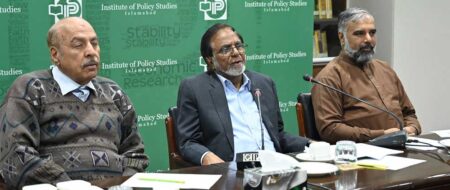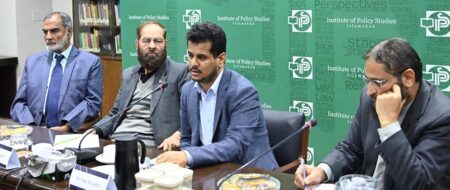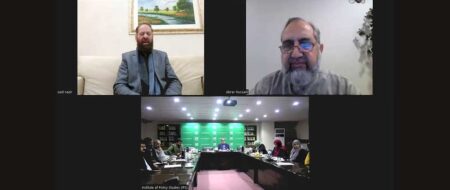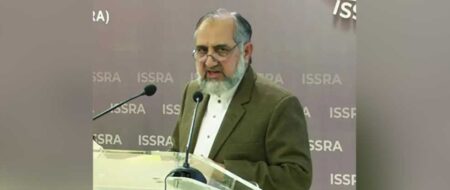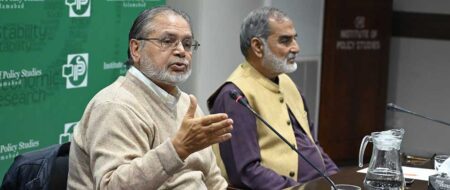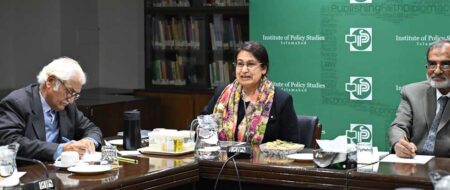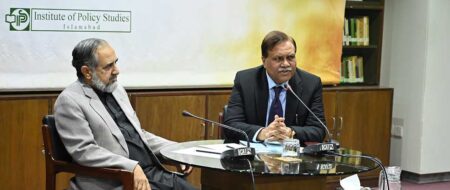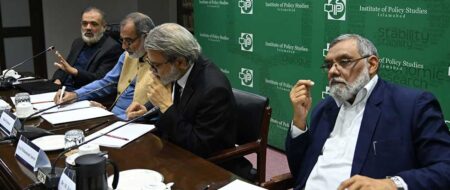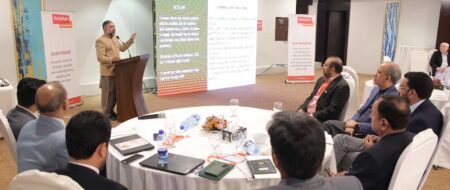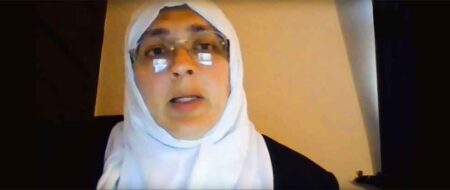Rising Electricity Tariffs – from NEPRA’s Determination to Consumers’ Electricity Bill
Experts at a seminar on energy at Institute of Policy Studies, Islamabad were unanimous in the view that the main reasons for the high tariff rates in resource-rich Pakistan were governance related due to the short-sightedness of policy-makers, corruption, mismanagement, and unavailability of the right people at the right places.
The seminar titled, “Rising Electricity Tariffs – from NEPRA’s Determination to Consumers’ Electricity Bill”, held on January 29, 2014, was addressed by Salahuddin Rifai, senior energy expert, Syed Salman Rehman, tariff expert and assistant director at NEPRA, Waheed Akram, IESCO’s manager customer services, Ameena Sohail, IPS associate and coordinator of its Tawanai program. Mirza Hamid Hasan, member IPS-National Academic Council and former secretary water & power chaired the program.
It was highlighted that the existing power tariff in the country was Rs14 and with the addition of 17 per cent GST and 3.5 per cent excise duty it becomes Rs16.95, which was the highest in the region.
Criticizing the short-sightedness of the Pakistan’s energy managers the expert speakers and participants of the seminar viewed the overwhelming share of fossil fuel based power generation as the main cause of the exorbitant per KWH tariff in Pakistan. It was revealed that in India and Bangladesh the tariff for the same unit was Rs7.36 and Rs5.47 respectively. Even in the US it was equal to Rs8.59.
Presenting an overview of the country’s energy planning since the beginning, Salahuddin Rifai informed the participants that WAPDA started at 118 MW installed capacity, 700 GWH generation, PKR70 million revenue and 270,000 consumers. The power sector of the country was self-financed at the beginning. Till mid-1980s the power generation of WAPDA increased to about 5700MW through projects build out of its own profits and government loans on 17-18 per cent compound interest. The government stopped providing loans to WAPDA in 1985.
He further informed that the load growth during 1960 to 1985 was tremendous: up to 18 per cent annually. The World Bank undertook to finance 60 per cent of development on condition of 40 per cent self-financing by WAPDA out of its own profits. In 1985, the concept of private power generation was introduced and the federal government floated the first tender.
He lamented that in 1988 the first MOU was signed for the furnace-oil based 1292MW Hubco plant out of tens of offers and Pakistan became the first country in the Third World to have private power generation, that too on furnace oil and exorbitant costs. He also criticized the financial terms of the Hubco agreement agreed by the government of Pakistan.
 |
 |
 |
Presenting data on achievements of targets against planned targets in installed capacity of power generation from 1955 to 2010, Rifai told that the progress from the first five-year plan (1955-60) to the eighth five-year plan (1993-98) was quite satisfactory. Unfortunately, however, no addition was planned in the ninth five-year plan (1998-2003) and only a deplorable six per cent target was achieved against the planned 7880MW in the Medium Term Development Framework (2005-2010). He said due to this failure, today, the electricity shortfall has reached 3916MW.
He blamed the pro-furnace oil government policies for power generation for the current energy crisis and warned that the fuel cost in 1994 policy of Rs0.60/KWH, which increased to Rs15 in 2013 may go to Rs100 in 2025 if the international oil prices continue to increase with the same pace.
NEPRA’s Syed Salman Rehman apprised the participants of the tariff determination mechanism of the Authority and claimed that despite of regular public hearings for tariff determination there was very little contribution on the part of consumer organizations and representatives in the process.
IESCO’s representative Waheed Akram informed that the distribution company was collecting ‘more’ than 100 per cent bills from private, commercial and industrial customers and around 25 per cent of an average bill also consists of various taxes that the government was collecting through the DISCOs. However, he informed, the recoveries from the government sector were only 53 per cent. Interestingly, the AJK government pays only Rs2.2 per unit to IESCO against the NEPRA determined tariff of Rs12 for government departments, he disclosed.
Ameena Sohail urged NEPRA and other power sector organizations to make meaningful efforts to create awareness among the consumers about tariff determination and billing.
 |
 |
 |
 |
DG-IPS Khalid Rahman, in his concluding speech, suggested that building formal linkages with universities and think tanks can help NEPRA in generating creative solutions to the problem, specially by using new innovative technologies.
Miza Hamid Hasan, who chaired the session, regarded the seminar as a very fruitful one as it not only gave the opportunity to NEPRA and IESCO to present their side of story but also connected them directly with the consumers to understand the issues and problems at their end.



